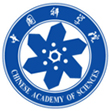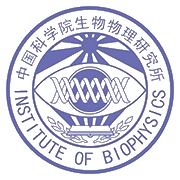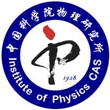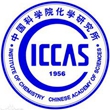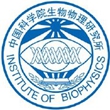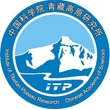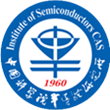Sessions 1:Mathematics and Physics
Hongjun Gao
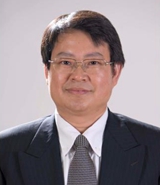
Character introduction
Experience of education and training
Professor GAO Hongjun, an experimental condensed matter physicist, is now a Deputy Secretary-General of the Chinese Academy of Sciences (CAS). He was born in Huaiyuan, Anhui Province in 1963 and obtained his MS and Ph.D. degrees from Peking University in 1991 and 1994, respectively. He was elected CAS Member in 2011 and Fellow of The World Academy of Sciences for the advancement of science in developing countries (TWAS) in 2012. He is now a member of the Standing Committee of the 13th China People's Political Consultative Conference (CPPCC) and was a member of the Standing Committee of the 12th CPPCC.
Positions
Dr. GAO was appointed Vice President of the University of Chinese Academy of Sciences (UCAS) and Chair of the UCAS Academic Committee of Sciences. He was the Scientific Secretary of the International Union of Vacuum Science, Technology, and Applications (IUVSTA) in the triennium 2004-2007, and the Chairman of the NSTD, IUVSTA (2010-2013). From 1997 to 2000, he worked at the Oak Ridge National Laboratory (ORNL) as a Guest Scientist. He has served as an Associate Editor for Appl. Phys. Lett. from 2010 to 2018 and editorial board members for several international journals.
Research and achievements
Dr. GAO has made significant contributions in construction and physical properties of quantum nanostructures and scanning tunneling microscopy/spectroscopy. He was awarded the “Humboldt Research Award 2010”, the “TWAS Prize in Physics 2009”, the “OCPA AAA (Robert Prize)” (OCPA: the Overseas Chinese Physics Association; AAA: Achievement in Asia Award), the “TAN KAH KEE Science Award” in Mathematics and Physics, “2012 Science and Technology Awards of the Ho Leung Ho Lee”, and “2013’s Outstanding Science and Technology Achievement Prize of the Chinese Academy of Sciences”, etc.
Professor GAO Hongjun, an experimental condensed matter physicist, is now a Deputy Secretary-General of the Chinese Academy of Sciences (CAS). He was born in Huaiyuan, Anhui Province in 1963 and obtained his MS and Ph.D. degrees from Peking University in 1991 and 1994, respectively. He was elected CAS Member in 2011 and Fellow of The World Academy of Sciences for the advancement of science in developing countries (TWAS) in 2012. He is now a member of the Standing Committee of the 13th China People's Political Consultative Conference (CPPCC) and was a member of the Standing Committee of the 12th CPPCC.
Positions
Dr. GAO was appointed Vice President of the University of Chinese Academy of Sciences (UCAS) and Chair of the UCAS Academic Committee of Sciences. He was the Scientific Secretary of the International Union of Vacuum Science, Technology, and Applications (IUVSTA) in the triennium 2004-2007, and the Chairman of the NSTD, IUVSTA (2010-2013). From 1997 to 2000, he worked at the Oak Ridge National Laboratory (ORNL) as a Guest Scientist. He has served as an Associate Editor for Appl. Phys. Lett. from 2010 to 2018 and editorial board members for several international journals.
Research and achievements
Dr. GAO has made significant contributions in construction and physical properties of quantum nanostructures and scanning tunneling microscopy/spectroscopy. He was awarded the “Humboldt Research Award 2010”, the “TWAS Prize in Physics 2009”, the “OCPA AAA (Robert Prize)” (OCPA: the Overseas Chinese Physics Association; AAA: Achievement in Asia Award), the “TAN KAH KEE Science Award” in Mathematics and Physics, “2012 Science and Technology Awards of the Ho Leung Ho Lee”, and “2013’s Outstanding Science and Technology Achievement Prize of the Chinese Academy of Sciences”, etc.
Topic: The Observation of Majorana Zero Mode and Conductance Plateau in an Iron-based Superconductor *
Abstract Majorana zero-modes (MZMs) are spatially-localized zero-energy fractional quasiparticles with non-Abelian braiding statistics that hold great promise for topological quantum computing. Recently, by using scanning tunneling microscopy/spectroscopy (STM/STS), a new breakthrough of Majorana zero mode (MZM) was achieved in a single material platform of high-Tc iron-based superconductors, FeTe0.55Se0.45, which combined advantages of simple material, high- Tc, and large ratio of Δ/EF [1]. A detail STM/STS study of a FeTe0.55Se0.45 single crystal, also revealed the mechanism of two distinct classes of vortices present in this system, which directly tied with the presence or absence of zero-bias peak [2]. To further investigate the MZM, it is still needed to find a smoking-gun for the existence of MZM, and a quantized conductance plateau is widely believed to be one of them. Here we report an observation of the Majorana conductance plateau in vortices on the iron superconductor FeTe0.55Se0.45 surface by using STM/STS [3]. We found that both extrinsic instrumental convoluted broadening and intrinsic quasiparticle poisoning can reduce the conductance plateau value. When extrinsic instrumental broadening is removed by deconvolution, the plateau is found to nearly reach a 2e2/h quantized value. The direct observation of a conductance plateau on a single zero-mode in a vortex strongly supports the existence and protection of MZMs in this iron-based superconductor, which can serve as a single-material platform for Majorana braiding at relatively high temperature.
* In collaboration with, D.F. Wang1,2, L.Y. Kong1,2, P. Fan1,2, H. Chen1, S.Y. Zhu1,2, W.Y. Liu1,2, L. Cao1,2, Y.J. Sun1,2, S.X. Du1,2,3, J. Schneeloch4, R.D. Zhong4, G.D. Gu4, Liang Fu5, Hong Ding1,2,3.
1 Institute of Physics & University of Chinese Academy of Sciences, CAS, Beijing 100190
2 CAS Center for Excellence in Topological Quantum Computation, UCAS, Beijing 100190
3 Collaborative Innovation Center of Quantum Matter, Beijing 100190
4 Brookhaven National Laboratory, Upton, New York 11973, USA
5 Dept. of Physics, Massachusetts Institute of Technology, Cambridge, Massachusetts 02139, USA
References:
1. D. F. Wang et al., Science. 362, 333 (2018).
2. L. Y. Kong et al., Nature Physics online (Aug. 19th, 2019)
3. S. Y. Zhu et al., arXiv: 1904.06124 (submitted to Science on February 15th, 2019)
* In collaboration with, D.F. Wang1,2, L.Y. Kong1,2, P. Fan1,2, H. Chen1, S.Y. Zhu1,2, W.Y. Liu1,2, L. Cao1,2, Y.J. Sun1,2, S.X. Du1,2,3, J. Schneeloch4, R.D. Zhong4, G.D. Gu4, Liang Fu5, Hong Ding1,2,3.
1 Institute of Physics & University of Chinese Academy of Sciences, CAS, Beijing 100190
2 CAS Center for Excellence in Topological Quantum Computation, UCAS, Beijing 100190
3 Collaborative Innovation Center of Quantum Matter, Beijing 100190
4 Brookhaven National Laboratory, Upton, New York 11973, USA
5 Dept. of Physics, Massachusetts Institute of Technology, Cambridge, Massachusetts 02139, USA
References:
1. D. F. Wang et al., Science. 362, 333 (2018).
2. L. Y. Kong et al., Nature Physics online (Aug. 19th, 2019)
3. S. Y. Zhu et al., arXiv: 1904.06124 (submitted to Science on February 15th, 2019)
Previous Shige Peng
Next Jianwei Pan
